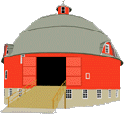SEGMENT: FARMING DURING WWII, FARM EQUIPMENT, & LAND
Ray (Bud) Nuckols>UIS Collection N-R>UIS Collection N-R, Segment 2
| <-Previous Segment | Next Segment-> |
- FARMING DURING WWII
- Pearl Harbor news effected farmers. Rationing of sugar, flour and gasoline. Had to get permission from board to buy a new tire. Farmers had priority for labor and exemptions from the draft. Farmers were charged with task of increasing production. Some farmers volunteered for service, anyway. Every farm had a large garden - Victory Gardens in country and in town. Not many gardens anymore because of availability of foods in stores.
- LAND
- Truck or vegetable farming requires a loose soil. Soil in Auburn varies, but is often black gumbo, which packs hard, but will grow field crops. Farmers could test for Ph (lime), but took samples in to Farm Bureau to test for other chemicals. Could buy lime and spread it on, or hire it done. Weeding was done by cultivation, but had a lot of weeds.
- FARM EQUIPMENT
- Had a one-row corn picker, then double row one. Had a tractor on a picker and a wagon on the side. Later the picker fit over the tractor & hooked the wagon behind. Before pickers, had to pick by hand. Started in late October and continued through winter. Corn was picked in the ear, not shelled. Took ears to crib in batches. Fences kept animals out of fields. After field was picked, let animals in to eat up stalks, then field plowed in the spring. Now they plow in fall. Today there are no fences.
- FENCES
- Hedge apple (Bois d'Arc) fences described; wired and thick for keeping livestock out. Fill in gaps by splitting one trunk and bending it down to fill in. Only the McNaught farm in Auburn still had miles of hedgerows in 1980. Hedge apples useless.

